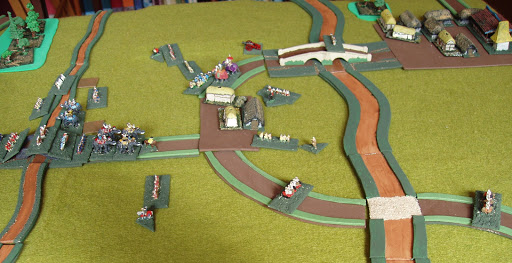There have been a plethora of ‘bucket list’ type books published recently, along the lines of ‘Fifty Places You Should See…’ before you become incapable. Probably these are representative of the angst of our age. Quite likely also that they are writers and publishers spotting a decent gap in the market to make some money.
Never having been one to duck a cultural challenge, of course, I have tried to come up with my own list. Or rather, I have come up with a challenge to my loyal reader. After all, why should I do the hard thinking, particularly at Yuletide, when I can get someone else to contribute. You have heard of ‘crowdfunding’, now let us try ‘crowdthinking’.
So, the challenge is to think of fifty historical battles which are wargamable and which are interesting and / or instructive enough to be worth putting effort into wargaming. Being mostly an ancients and early modern wargamer, I suspect that choices will be deeply biased. But, you never know, we might get a book out of it.
My contributions, in no particular order, with a few extra notes:
1. Marathon: The granddaddy of all the historical battles, with so much speculation for just a few paragraphs in Herodotus. Also, it was the subject of one of the first wargame articles I read, way back when, by Charles Grant in ‘Military Modelling’.
2. Edgehill: I have always thought of this as one of the most interesting ECW battles, because neither side really had a clue what they were doing, nor how it should go. More or less any outcome, therefore, seems historically acceptable. Getting wargame rules to accept than an army, having lost both wings and one-third of the centre, can still nearly win is a bit of a challenge, though.
3. Pavia: Or, how to handle early sixteenth-century arquebus units correctly. Not only that, but it was an interesting battle, had significant consequences internationally and the Italian Wars are nothing if not colourful.
4. Issus: You have to have something Alexandrian, don’t you? Even if you think he was a violent, drunken lunatic with absolutely zero self-control and a god complex, he could command a decent battle, although in the Persians under Darius he was not facing the cream of possible opponents. Alexander had also got himself outmanoeuvred strategically, a point which a lot of Alexander worshippers tend to overlook, and he had no choice but to fight his way out of a tight corner.
5. Cremona: The answer to the question ‘who did the Romans mostly fight?’ is, of course, Romans. So one of the civil war battles is a given. I could have picked Caesar against Pompey, but the Year of the Four Caesars will certainly throw up a few interesting conflicts, and the second battle of Cremona is one, detailed in Tacitus’ The Histories.
6. Khanua: Given the nature of the blog, I have to go a little exotic with my list, at least, and the second great battle of Babur, against the Rajputs, seems to fit the bill. Much harder fought than Panipat, but decisive use of firepower again seems to have won the day.
7. Nagashino: Another, more exotic (although probably more familiar to wargamers) battle, again with firepower as the deciding influence. But who can fail to be seduced by the Samurai and their armour? I mean, come on, we are only human, are we not? Fanatical loonies, desperate cavalry charges against prepared defences, what is not to like?
8. Agincourt: Proof, if proof were needed, that some people do not learn from experience. The French, having an ‘army in being’, did not really need to attack Henry, but of course, you need to do the honourable and chivalrous thing and blunder through a muddy field to be present an obliging target to be shot down by Welsh archers. Sarcasm aside, of course, it is an interesting tactical problem – how do you launch heavy infantry at a more mobile firepower army?
9. Ramillies: Of course, Marlborough has to be in anyone's list of good generals, and Ramillies is a masterpiece. It also throws up some interesting questions about grand tactical movement on the battlefield, and French generals buying into feints. It was also a bit before Marlborough's opponents had noticed his habit of pinning their forces and then breaking through somewhere else.
10. Vienna 1683: Of course, the first Ottoman siege of Vienna is interesting, but 1683 combines all sorts of aspects into one major battle, with a wide variety of troop types from Polish hussars to Western European line infantry, along with Janissaries, Ottoman irregulars and so on. As the last gasp of a failing empire (sort of, the Ottoman Empire lasted until 1918, which hardly suggests imminent collapse in 1683) it also has a great deal of strategic interest.
So, my contribution for ten battles. I have tried to avoid fights I know little about (and you have failed, I hear the critics cry). I dare say there may well be cries for Waterloo, D-Day or Stalingrad, along with Gettysburg Minden or similar. I am not going to argue from my normal basis or ignorance.
I have put ten battles up, which I think are all wargamable, and so, according to the title, there are only another 40 to go. So, over to you. Suggestions in the comments please, and if you can add a paragraph of justification, so much the better. Given that today is Boxing Day (the Feast of St Stephen) when, traditionally, games and puzzles are played, this is your starter to the festive season.
Finally, as is usual in recent years, here are the latest version of the WotCR rules, for anyone interested.
And a very Merry Christmas to you all.











